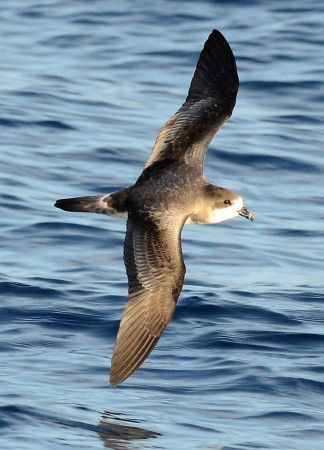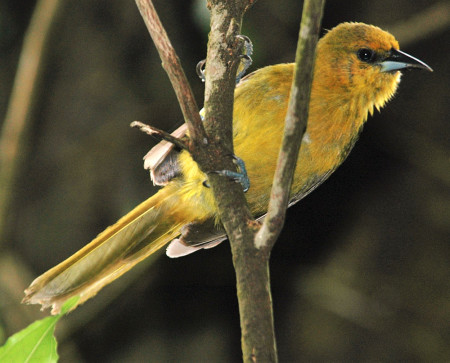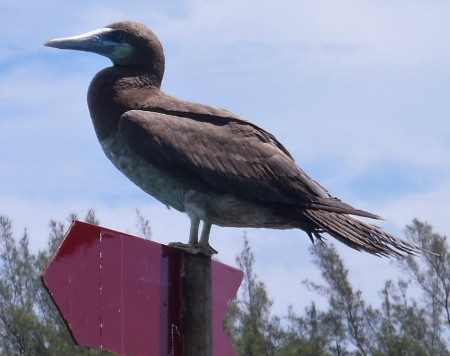The journal British Birds is keen to highlight Important Bird Areas (IBAs) in the UK Overseas Territories (UKOT) and Crown Dependencies in the Caribbean. Developed by BirdLife International, the IBA program strives to identify, document and protect all places on earth of greatest significance for the conservation of birds. Our members may already know how important IBAs are in the Caribbean – especially for the protection of restricted-range species and endemics. It is fantastic to see these unique areas receiving wider exposure.
Four UKOTs in the Caribbean region have already been featured in the journal: Bermuda, Montserrat, The Cayman Islands, and Anguilla. Each one provides a thorough account of bird life in the territory with over 10,000 words, numerous photos and maps, making them an excellent addition to the region’s ornithological literature. Well done to all the authors. We have included the abstracts of the four reports here; to read the full articles you can subscribe to British Birds or you can buy an individual issue at their website.

Important Bird Areas: Bermuda
Published on 08 March 2017
Andrew Dobson and Jeremy Madeiros
Bermuda is a UK Overseas Territory in the western North Atlantic and was uninhabited before being settled by the British over 400 years ago. It is one of the most isolated inhabited islands in the world. Despite its remoteness and its suburban landscape, it has a remarkable avian richness and history. The rediscovery of the breeding grounds of the Cahow, or Bermuda Petrel Pterodroma cahow, in 1951 made international news in an age without social media. The continuing success of the Cahow recovery programme provides hope for similar projects elsewhere. There is a globally significant population of White-tailed Tropicbirds Phaethon lepturus and there are proposals to confer endemic subspecies status on the locally breeding Common Tern Sterna hirundo. Current threats to Bermuda’s biodiversity include climate change, the increasing frequency and intensity of tropical storms, and invasive species.
Important Bird Areas: Montserrat
Published on 16 February 2015
Steffen Oppel, Gerard Gray, James Daley, Stephen Mendes, Calvin Fenton, Gemma Galbraith, Shawn Daniel and James Millett

Montserrat is a small jewel of an island in the eastern Caribbean. After a major volcanic eruption in 1995, two-thirds of the island became uninhabitable, and today Montserrat is off the beaten track for most tourists. The island is easily accessible, however, and a range of habitats support a variety of interesting native biodiversity. Three hill ranges exist on the island, the southernmost being an active volcano and mostly devoid of vegetation. The Centre Hills, an area of semi-natural forest, is home to endemic species such as the Montserrat Oriole Icterus oberi, the Montserrat Galliwasp Diploglossus montisserrati (a skink), and the ‘Mountain Chicken’ Leptodactylus fallax (a frog). Besides the Centre Hills forest, there are dry scrublands in the northern hill range, coastal cliffs, and some unspoilt beaches with scenic reefs suitable for snorkelling and diving. The island’s habitats suffer from the effects of multiple non-native species such as feral pigs, goats, cattle, rats and cats. Efforts to control these are under way, and the Centre Hills forest is protected. Protecting the forest on Montserrat is the most critical target both for native biodiversity and for water supply on the island.
Important Bird Areas: The Cayman Islands
Published on 10 May 2016
Patricia Bradley
The Cayman Islands, in the western Caribbean, are a UK Overseas Territory. Three main islands support a wide range of birds, with 17 endemic races of breeding landbird. The Grand Cayman Thrush Turdus ravidus, currently treated as the only endemic bird species, was last seen in 1938. However, taxonomic research may mean that ‘Taylor’s Bullfinch’ Melanopyrrha (nigra) taylori, which occurs only on Grand Cayman, is treated as full species. There are many challenges of managing a conservation strategy on small islands such as these. The currently rapid human population growth (with a variety of associated development pressures), and the prospect of increased number and severity of tropical storms, are two of the most important threats to the biodiversity of these islands. Strategies to address these issues by the National Trust and National Conservation Council are discussed.
Important Bird Areas: Anguilla
Published on 04 August 2015
Steve Holliday, Karim Hodge, Farah Mukhida, Clarissa Lloyd, James Millett and Louise Soanes

Anguilla is a UK Overseas Territory, the northernmost of the island groups in the Lesser Antilles, in the eastern Caribbean. It has been long known for its seabirds; 16 species currently breed, with Red-billed Tropicbird Phaethon aethereus, Brown Booby Sula leucogaster and Sooty Tern Onychoprion fuscatus occurring in globally important numbers. There are 16 Important Bird and Biodiversity Areas (IBAs), including five of the islands holding the main seabird colonies. The mainland IBAs are identified for populations of breeding seabirds, including Least Terns Sternula antillarum, and/or five restricted-range terrestrial species confined to the Lesser Antilles Endemic Bird Area (EBA). The Dog Island IBA is one of the most important seabird colonies in the Caribbean. Considerable economic growth in recent decades, especially from increased tourism, presents challenges to ensure that new development is sustainable, helping to maintain the rich biodiversity and natural resources upon which the growth is founded.
